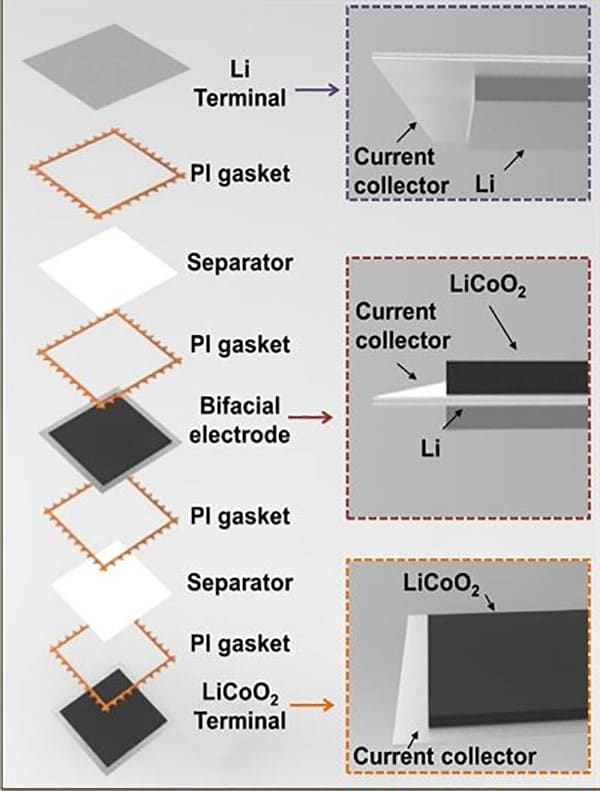The drive to power ever-smaller miniatured electronics, wearable medical devices, distributed sensors, microrobots, and internet of things (IoT) applications has motivated the interest and market growth of microscale batteries. However, translating the electrochemical performance of large-format batteries to microscale power sources has been a long-standing technological challenge, limiting the ability of batteries to power microdevices.
Now, researchers at the University of Illinois Urbana-Champaign have created a high-voltage microbattery, with high-energy and -power density unparalleled by any existing battery design.
“We need powerful tiny batteries to unlock the full potential of microscale devices by improving the electrode architectures and coming up with innovative battery designs,” said Paul Braun, the Material Science, and Engineering Professor. The problem is that as batteries become smaller, the packaging dominates battery volume and mass, and the electrode area becomes small, resulting in dramatic reductions in energy and power.
In their unique design of powerful microbatteries, the team developed novel packaging technology that used the positive and negative terminal current collectors as part of the packaging itself. This allowed for the compact volume and low package mass fraction of the batteries. Moreover, they vertically stacked the electrode cells in series, which enabled the high operating voltage of the battery.

In addition to current collectors, researchers use very dense electrodes, which offer energy density to improve these microbatteries. Braun’s group has grown electrodes by an intermediate temperature direct electrodeposition technique which are fully dense and without polymer and carbon additives. These fully dense electrodes offer more volumetric energy density than their commercial counterparts.
In their research, the team fabricated the microbatteries using the dense electroplated DirectPlate LiCoO2 electrodes manufactured by Xerion Advanced Battery Corporation (XABC, Dayton, Ohio), a company that spun out of Braun’s research.
“To date, electrode architectures and cell designs at the micro-nano scale have been limited to power-dense designs that came at the cost of porosity and volumetric energy density,” said Arghya Patra, Graduate Student, and co-first author. “Our work has been successful in creating a microscale energy source that exhibits both high power density and volumetric energy density.”
The applications of these microbatteries include powering insect-size microrobots to obtain valuable information during natural disasters, search and rescue missions, and in hazardous environments where direct human access is impossible.
Co-author James Pikul points out that “the high voltage is important for reducing the electronic payload that a microrobot needs to carry. 9 V can directly power motors and reduce the energy loss associated with boosting the voltage to the hundreds or thousands of volts needed from some actuators. This means that these batteries enable system-level improvements beyond their energy density enhancement so that the small robots can travel farther or send more critical information to human operators.”
Braun, a pioneer in the field of battery miniaturization, concludes, “our current microbattery design is well-suited for high-energy, high-power, high-voltage, single-discharge applications. The next step is to translate the design to all solid-state microbattery platforms, batteries which would inherently be safer and more energy dense than liquid-cell counterparts.”
Journal reference:
- Sungbong Kim, Arghya Patra, Ryan R.Kohlmeyer, Seongbin Jo, Xiujun Yue, Alissa Johnson, Chadd T. Kiggins, Beniamin Zahiri, Keunhong Jeong, Jahyun Koo, Taewook Kang, Pengcheng Sun, John B.Cook, James H. Pikul, Paul V.Braun. Serially integrated high-voltage and high power miniature batteries. Cell Reports Physical Science, 2022; DOI: 10.1016/j.xcrp.2022.101205
Researchers create high-voltage and high power microbatteries
Source: Tambay News

0 Comments